This week’s cooking projects from my collection of recipes included bran muffins for mom using her recipe, some more bread in my bread machine, chocolate buttercrunch, cooked ground beef and onions frozen in ice cube trays, my breakfast sandwiches, and the subject of this post, my version of a favourite dish my mom has made for me almost all my life, a corned beef hash using a commercial, canned, corned beef luncheon meat.
The principal differences between this version and mom’s version is that she has always used, and continues to use, commercial frozen hash brown potatoes purchased at the supermarket frozen goods section, instead of making and cooking them from fresh potatoes, and, she uses margarine instead of olive oil. She also noted the importance of not using cheap quality onion salt; my personal experiences so far in making the dish have indicated the value that onion salt itself brings to the dish. All this being said, though, my efforts have largely replicated mom’s dish to the point that my version is rather close to mom’s.
It should be noted that in this post, there is a very small number of photos which were taken either later in the evening after cooking, or the following morning, either as retakes, or to outright take some photos which I forgot to take the evening before during the cooking of the dish. Also, I made the dish at the cottage.
Making the corned beef hash:
First, a nice beer was taken out — Mons Dubbel, a Belgian-style Dubbel 8% alc/vol in a 750mL bottle, from the Belgh Brasse Brewery, in Amos, Québec:

Next, the beer was poured into a glass:

… and of course, right away I had to do a bit of quality control on the beer:
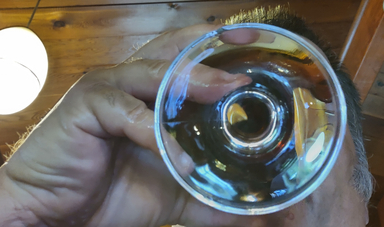
Now to the cooking of the corned beef hash, really, this time:
A bowl was placed on a kitchen scale, and the scale was set to zero:

About 900 grams, or about two pounds, of potatoes were measured out in the bowl:

Water was placed in a pot:
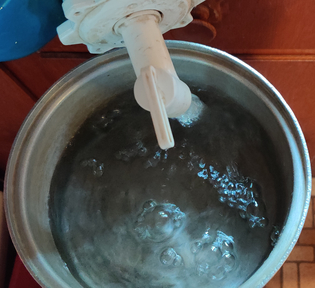
The potatoes were peeled:

The peeled potatoes were placed in the pot of water:

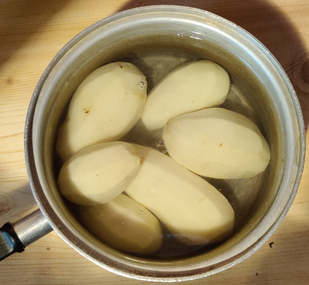
A French-fry cutter was taken out:

Potatoes were placed in the French-fry cutter:

The potatoes were sliced with the French-fry cutter:

If you don’t have a French-fry cutter, you can slice the potatoes lengthwise with a kitchen knife:
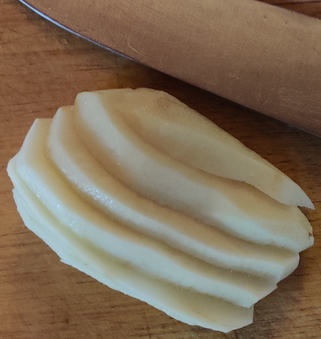
… and then slice the potatoes again lengthwise to make French fries:

The French fries were cut into cubes, about half an inch in all dimensions:

The potato cubes were placed back in the pot of water:
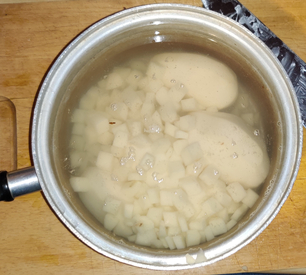

The water was drained from the potato cubes:

The potato cubes were again covered with fresh water, for rinsing the potatoes:


The water was again drained from the potato cubes, and the potato cubes were put aside:

Onions were taken out:

The onions were cleaned and trimmed:

The onions were sliced into halves:

The onion halves were sliced into half-coins …

… and then the onions were coarsely chopped:

The onions were added to the potatoes:

The onions and potatoes were transferred to an electric skillet:

Water was measured out:
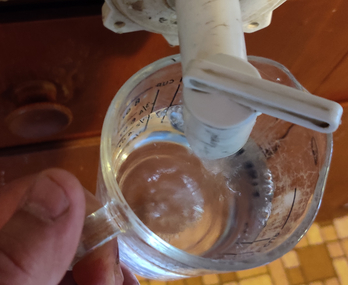
The water was transferred to the skillet with the onions and potatoes:

Onion salt was added to the ingredients:
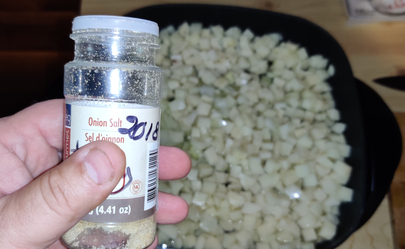

Olive oil was added to the ingredients:


The electric griddle had been turned on by this point:

The water was brought to boiling:

The electric skillet was covered:
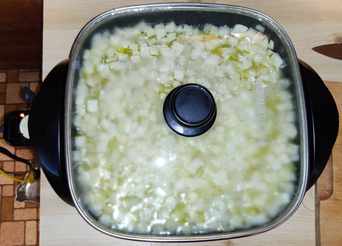
A timer was set to five minutes:

The potato and onion mix was boiled for five minutes:

After five minutes, the cover was removed:

At this point, my beer glass was empty, so I refilled it with the rest of the yummy beer from the double bottle:

While the water fraction was boiling off in the electric skillet, a can of corned beef luncheon meat was taken out:

The can of corned beef was opened:
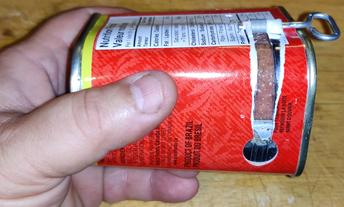

After a few minutes, the water fraction had begun to boil off, and the potatoes and onions began to fry:

The corned beef was added to the frying potatoes and onions:

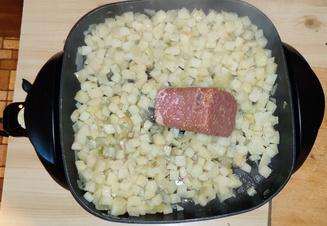
The corned beef was broken up with a spatula / egg flipper:
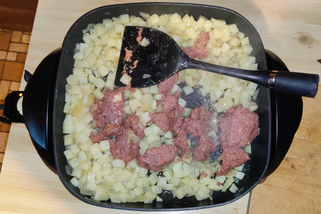
The corned beef, potatoes, and onions were mixed together:

The corned beef hash continued to be fried and mixed:

The corned beef hash was just about ready:

Once the potatoes began browning, a yummy supper was served on a plate, while the rest was placed in a container to freeze and have a lunch:
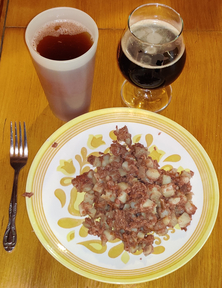
Yummy!
